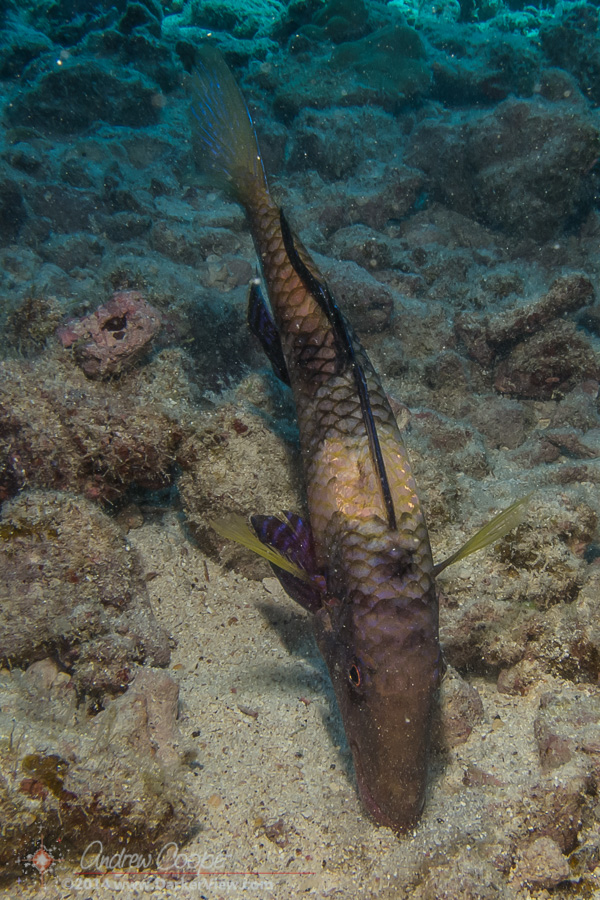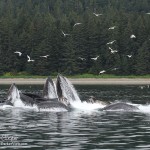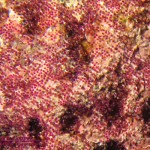
Tag: feeding
Bubble Net Feeding
Postcard from the Reef – Goatfish Feeding
The fish did not seem too concerned at my presence, or perhaps it was taking advantage of my being there. It was rooting about in the cave rubble, using its sensitive barbels to detect prey under the debris and sand. As I watched it would slowly sweep over the rubble, then suddenly and vigorously rummage about in a cloud of sand. I could not see if the fish was having any success, but it was interesting to watch.
So often fish and other marine creatures will modify their behavior when a diver is present. It is always interesting when you run across something continues on despite being watched. It is worth a few minutes of air to sit and observe, sit and learn.

Bubble Net Feeding
It is one of those spectacles of nature that you will never forget. I have seen a total solar eclipse, a meteor storm, calving glaciers, flash floods, come eye-to-eye with a grizzly bear, and I have witnessed bubble net feeding.

It is the last part of a carefully coordinated feeding maneuver that we see at the surface. One or two whales trap a school of herring by means of a circular wall of bubbles blown underwater. The whales swim in a tight circle, forcing the prey into a tight ball. Once the setup is complete the entire pod of whales charge vertically through the net, sweeping through the bait ball with open mouths. They all come up together at the end, with ventral pleats distended, full of water and herring to be filtered through the baleen.
The process is often repeated several times as the whales eat their fill. For the spectator the challenge it to guess where they will come up. If you want good photos it is necessary to be aimed and ready when the whales erupt from the water. To do this you must watch the birds. There is often a flock of gulls awaiting the whales, hoping to scoop up dazed herring forced to the surface in the net. From their vantage point well above the water the gulls see the net before you do, the entire wheeling flock suddenly heads in one direction, that is where.
Feeding Frenzy
With my face behind the camera, and looking the other direction, I did not notice the commotion I had caused. A swirl of colorful motion caught the corner of my eye. I turned to see a horde of butterflyfish attacking a seemingly uninteresting rock face. I watched for a moment before a memory triggered… Of course!

It is likely the gang of butterflyfish used my presence as an opening to overwhelm the Sergent. Local lore is full of examples of this behavior. The passage of a larger predatory fish, or a diver, will give the guarding male Sergeant a pause. A slim opening upon which the gang will swarm the eggs and feed. During Sergent breeding season it is not unusual for divers to mention schools of butterflyfish or tangs following them in and around the nesting areas.

I literally have to push my way through the swirling fish to examine the nest. The rock is covered with eggs, an amazing number of little purple dots covering an area of about a meter square. Despite the ongoing feeding frenzy, the nest seems intact, with nearly every bit of the rock covered with the neat little lines of eggs.
Hoover1 makes an interesting observation… “One can only wonder why Sergent eggs are so conspicuous while most damselfish eggs are hardly visible”
1) Hawaiian Reef Fishes, John P. Hoover, Mutual Publishing, 2008

